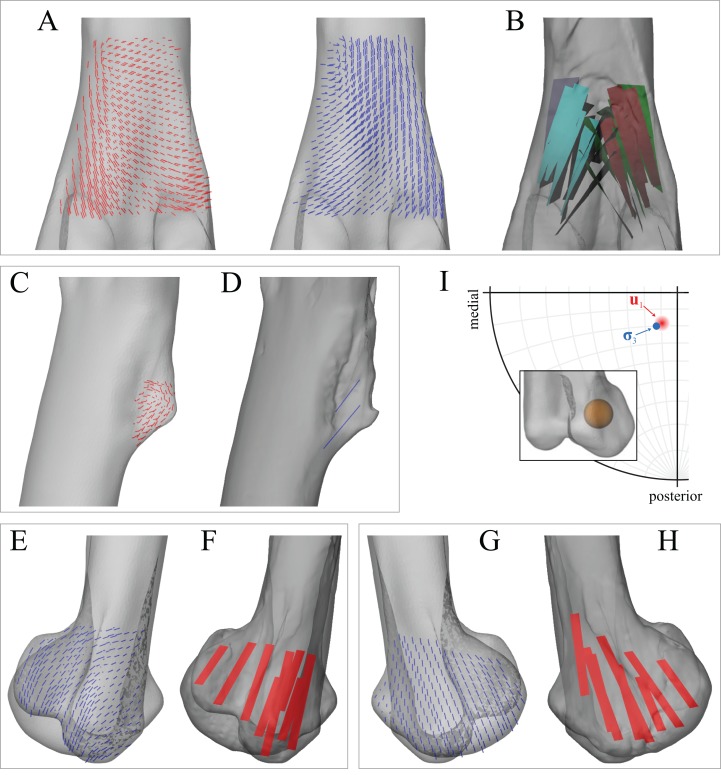Figure 7. Principal stress trajectories for the distal femur and fourth trochanter in the solution posture of Daspletosaurus, compared with observed cancellous bone fabric.
(A) Vector field of σ1 (red) and σ3 (blue) in a 3-D slice, parallel to the coronal plane and through the anterior aspect of the distal metaphysis, in anterior view. (B) Observed cancellous bone architecture in the distal metaphysis of Allosaurus and tyrannosaurids (cf. Part I), in the same view as (A). (C) Vector field of σ1 in the fourth trochanter, in medial view. (D) Observed cancellous bone architecture in the fourth trochanter of Allosaurus and tyrannosaurids (cf. Part I), in the same view as (C). (E) Vector field of σ3 in the lateral condyle, shown as a 3-D slice parallel to the sagittal plane and through the middle of the condyle. (F) Observed cancellous bone architecture in the lateral condyle of Allosaurus and tyrannosaurids (cf. Part I), in the same view as (E). (G) Vector field of σ3 in the medial condyle, shown as a 3-D slice parallel to the sagittal plane and through the middle of the condyle. (H) Observed cancellous bone architecture in the medial condyle of Allosaurus and tyrannosaurids (cf. Part I), in the same view as (G). (I) Comparison of the mean direction of σ3 in the medial condyle (blue) and the estimated mean direction of u1 for Allosaurus and tyrannosaurids (red), plotted on an equal-angle stereoplot with southern hemisphere projection. Inset shows location of region for which the mean direction of σ3 was calculated.

